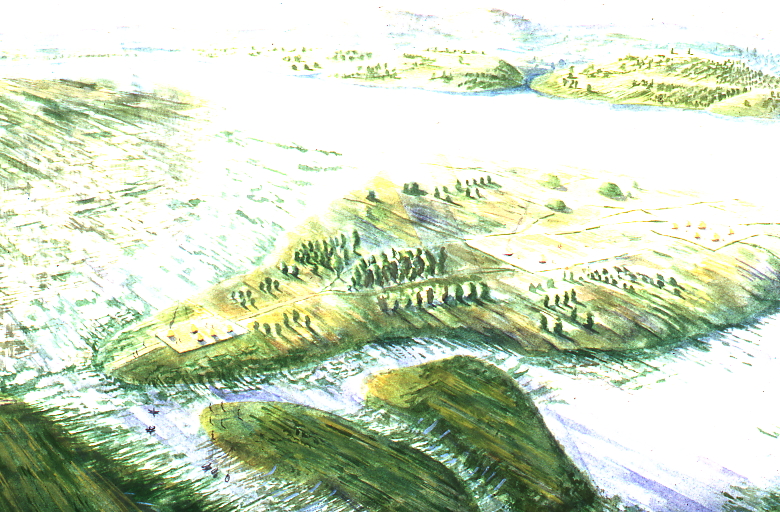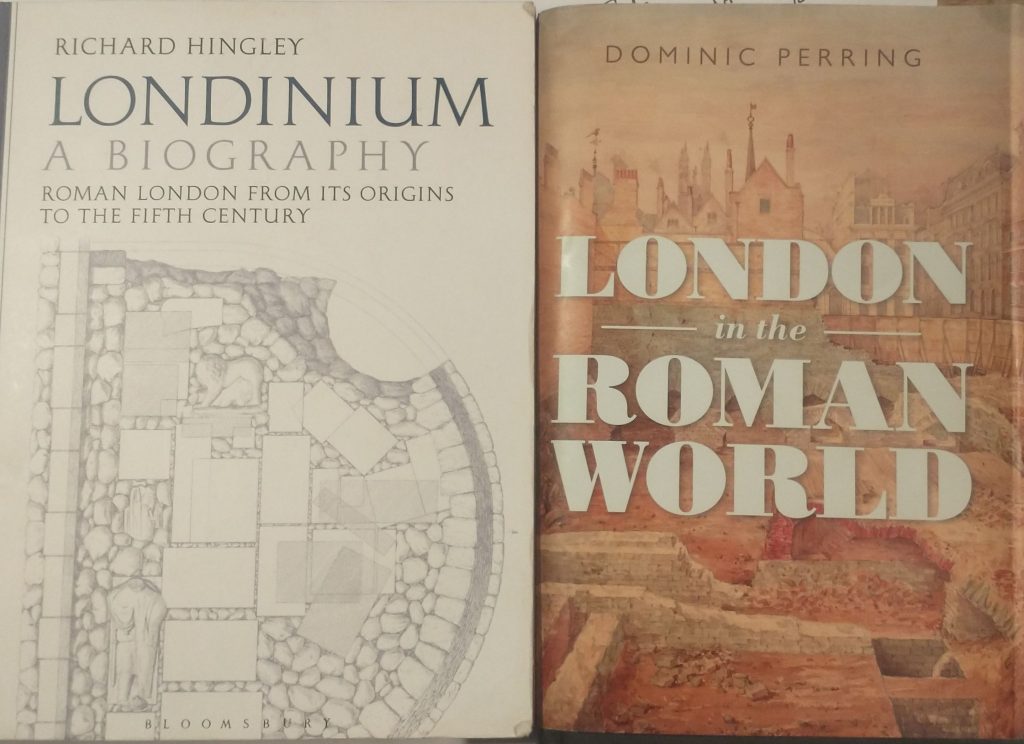
I have just finished a Guided Walk called ‘London Before And After The Roman Invasion’. Its the first time I’ve done this particular walk and it was very interesting because it focussed a lot of recent changes in ideas about early London. I decided to do the walk as wanted to refresh my knowledge of prehistoric London and the early Roman period.
So, when I first came to London as a young Archaeologist, we were engaged in a series of ground breaking archaeological excavations that completely revolutionised ideas about London.
So, old ideas were:
- There was a prehistoric London
- The City came into being as a Legionary Fortress built when the Roman Army was waiting for the Emperor Claudius to join them for the attack on the capital at Colchester.
- A formal road system was set up on Cornhill, with the North/South spine being the road north from London Bridge
- Southwark was a suburb on the other side of the bridge
- The town grew steadily and eventually spread over to the western hill – Ludgate Hill
- A fort was built in AD 120 then, c200AD, the Walls were built covering a large area because of the expanding City
- The Romans left and everything went to hell in a hand cart.
The new set of ideas were:
- People began to doubt the prehistoric London town in the early 20th Century, but it was completely dismissed by the 1970s and London was founded here simply because it was the best/only place for the Bridge and a superb site for the road junctions and Port.
- By the late 1970s evidence showed that London did not really get started till about 50AD, so the idea that London was a military foundation following on from a Legionary Fortress was dismissed. Instead, it was a town of civilians established by merchants taking advantage of the Bridge, the Road Junctions, and the Port.
- The formal road system was later than 43AD and Londinium was soon on both hills
- Southwark was rather more like South Londinium than a secondary suburb.
- Londinium had spread all the way to the later site of St Pauls by AD60 and its growth was very rapid. But decline set in as early as the 2nd Century. It struggled in the 4th Century and at the end of the Roman period there were not many people in it.
- The area inside the 200AD wall was not densely crowded, and the large size of the walled area was provably due to military decisions about the best defensive alignment for the wall.
- Roman London was already shrunken well before the end of the Roman presence in Britain.
Continued excavations created more data and the following discoveries were made
The foundation of London was dated to 48AD after dendrochronology dating of a wooden drain next to the main East West road through Roman London.
A Fort was built soon after the Boudica’s destruction of London in AD 60, just East of London Bridge

These two books were published and the new certainties about Roman London began to dissolve or resolve. Not yet sure which!
Lets have a look at those 7 points again:
- ‘There was a prehistoric London’ – Richard Coates in 1998 draw attention to the fact that the name Londinium is pre-Roman in origin and suggested it meant ‘Settlement by the flowing River’ Richard Hingley drew attention to the large amount of fine metal work in the river, and suggested a conclusion that , although there may not have been a prehistoric town before the Roman, the area was very important in the Iron Age, and suggest it was a ‘ritual landscape’ possibly associated with burial. Maybe, this might have been a factor in the Romans choosing the site to establish the crossing/town? Last year an excavation north of Liverpool Street found evidence of large scale feasting in the Late Neolithic leading some people to suggest London was an important ritual site before the coming of the Romans Dominic Perring dismisses ideas that it was an important area before the Roman period, and notes that most of the metal work is found further to the West. More about these discoveries in my post here:
- Dominic Perring cites evidence at three sites on Cornhill which suggests that London was indeed set up as a temporary Legionary Fortress in AD43, and suggests the first Bridge was a Pontoon Bridge. And therefore indeed built when the Roman Army was waiting for the Emperor Claudius to join them for the attack on the capital at Colchester. It was immediately dismantled.
- A formal road system was indeed set up on Cornhill, with the North South spine being the road north from London Bridge. This was set up in AD48, possibly still a supply base but began its transformation into a proper town c 52AD.
- Southwark was much more than a suburb on the other side of the bridge and had important formal buildings, possibly including the residence of the Procurator, after the Governor the most important person in Britain.
- The town grew quickly and soon spread over to the western hill – Ludgate Hill and the phases in this spread are detailed in Perring’s book.
- A fort was built in AD 62 which continued to about AD 85, and was possibly replaced immediately by a precursor to the Fort in the NW corner of the City near the old Museum of London and replaced in stone in AD 120 then, in c200AD, the Walls were built covering a large area because of the military requirements.
- I haven’t yet read the later London part of Perrings book, but he suggests that London develops when the Governor and the Emperor is involved in conquest, passification or development, and without government intervention London declines, so it develops in fits and starts and eventually the fits are more important than the starts and so it declines to virtually nothing.
Any way, congratulations to Dominc Perring who has created a really detailed description of the development of London. I’ve had to rethink quite a lot of my ‘old’ ideas and this is a great synthesis of the archaeology of London particularly over the last 50 years.
I’m sure I won’t agree with it all but I love the detail!
Discover more from And Did Those Feet
Subscribe to get the latest posts sent to your email.
